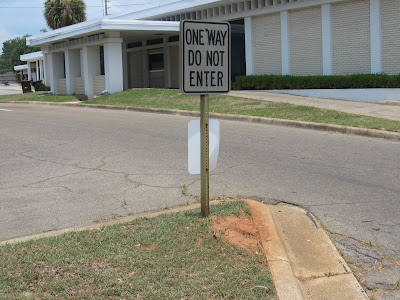 A couple weeks ago, I took a day trip to Quincy, Florida--about 40 or so miles West of Tallahassee. I pulled out a map of Florida, looked West on highway 90, and picked the first town on the Chiles Trail. Quincy was established in 1825, twenty years before Florida entered the Union. Back then, towns like Quincy, Tallahassee, and St. Augustine dominated Florida politics and culture. Though they rose no higher than the longleaf pines that surrounded them, the first American settlers call them home.
A couple weeks ago, I took a day trip to Quincy, Florida--about 40 or so miles West of Tallahassee. I pulled out a map of Florida, looked West on highway 90, and picked the first town on the Chiles Trail. Quincy was established in 1825, twenty years before Florida entered the Union. Back then, towns like Quincy, Tallahassee, and St. Augustine dominated Florida politics and culture. Though they rose no higher than the longleaf pines that surrounded them, the first American settlers call them home.
From the Walkin' Notes--his meticulous record of thoughts and impressions on the 1970 Walk--I knew Chiles had passed through Quincy, and got a gobbler to show for it! Below is an excerpt; see the Chiles Foundation website for the rest of the journal entry from that day.
Tom Cumbie, a druggist here in Quincy, offered to take me turkey hunting this morning, so we got up about 5:30 to go out and see if we could hear a gobbler. There was a lot of wind which caused Tom to say he thought the trip was going to be in vain, but we hadn't been in the woods 15 minutes when we heard the gobbler gobble and within another 15 minutes I had bagged a 15-pounder.
It got me to shaking so bad that Tom wanted to know what made me so nervous. But it was a real experience hearing that fellow rattling the woods. Tom had rattled his yelper and a hen had come up close and that brought the gobbler. It was quite a sight to see him stalking through the woods, and the experience was a thrill for me.
Later, in downtown Quincy, I was telling Sheriff Bob Martin and County Judge H.Y. Reynolds about getting the gobbler. Well, they kind of pulled a little joke on me. They said that since I was from out of county, they just might arrest me and hold me for a few days so I wouldn't even make Tallahassee. I finally made amends by telling them I would leave the turkey there and come back to eat it. They bought that idea.
Quincy is in Gadsden County, one of the three "Cotton Belt" counties surrounding Tallahassee with large black communities rooted in Civil War-era plantation life. Leon and Jefferson are the others, and unlike the rest of the Panhandle, they vote the Democratic slate. I guess Gadsden and Quincy--its county seat--act like most traditional Southern farm counties in Georgia, Mississippi, and Alabama. Black votes cancel out white ones, and only in "majority-minority" districts do Democrats dominate. There just aren't that many white "Yellow Dog" Democrats left anymore. In Quincy circa 2007 the "minority" is the majority, in population and local political representation.
The worst of racial conflict is hopefully behind Quincy. I spoke with a kind lady at the Quincy Art Gallery for a while once I got into town. She said she was born in Quincy in 1954 but moved away as a girl to Oregon. She never said why. Only recently had she moved back, and things pretty much stayed the same while she was gone. She said, however, that now "people were freer to be with each other." I hadn't heard anyone say it like that before. I liked it.

Quincy may be a state of mind to those who know it best, but from my perspective the town has changed. It now boasts an independent, community-owned utility, a
marvelous website, and a modern city hall.

The Gadsden County Courthouse still dominates the town, in height and personality. People talk about one-horse towns, one light towns...Quincy and other major Panhandle towns are "courthouse towns." They are the center of the county culture, where people go to worship, buy food at market, go to school, and of course, go to court. With that courthouse at the center of things, it's hard to forget the past--the Civil War comes to mind for me. I saw courthouse towns in rural North Carolina on the way to Florida from Virginia. One with a large Confederate soldier statue in front.
When Lawton Chiles retired from the U.S. Senate in 1988, still hungry for problem-solving, he settled on Gadsden County health care. I'm sure he a lot ran through his mind when he returned there almost twenty years after strolling through the Quincy town square on his way to Washington--including the folks who had asked him if he would ever come back.
The title of this post refers to the restaurant where I had lunch in Quincy, "A.J.'s Chicken and Things." The town surely brags on its beautiful art gallery, old-fashioned movie theater, and its strong internet network, but the greasy buffalo chicken sandwich at A.J.'s may be Quincy's finest.




















